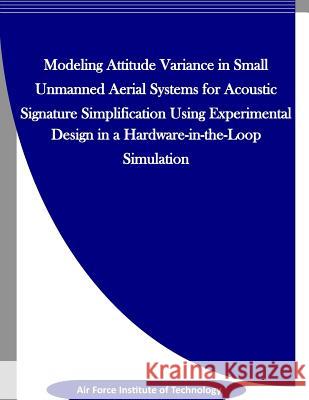Modeling Attitude Variance for Acoustic Signature Simplification in Small UASS using a Designed Experiment in a Hardware-in-the-Loop Simulation » książka
Modeling Attitude Variance for Acoustic Signature Simplification in Small UASS using a Designed Experiment in a Hardware-in-the-Loop Simulation
ISBN-13: 9781523327652 / Angielski / Miękka / 2016 / 54 str.
Modeling Attitude Variance for Acoustic Signature Simplification in Small UASS using a Designed Experiment in a Hardware-in-the-Loop Simulation
ISBN-13: 9781523327652 / Angielski / Miękka / 2016 / 54 str.
(netto: 56,29 VAT: 5%)
Najniższa cena z 30 dni: 55,53 zł
ok. 13-18 dni roboczych
Dostawa przed świętami

Darmowa dostawa!
The role and use of unmanned aerial systems (UASs) by the Department of Defense has been on the rise over the past decade. The majority of these systems are being utilized in environments where the UAS's acoustic stealth is frequently of greater importance than radio frequency or visual stealth. Additionally, missions involving these types of systems tend to involve dynamic mission planning requirements rather than preplanned routing. Therefore, an acoustic model capable of providing real-time probability of detection information is desired. However, with present-day technology and existing acoustic models, real-time calculation of the complete acoustic signature for a small UAS (SUAS) is not feasible. This research demonstrates that the acoustic signature of the Sig Rascal 110 SUAS can be reduced by greater than 99.3% when a listener point of interest is directly below the aircraft using a methodology to model SUAS attitude variance to reduce the portion of the acoustic signature of concern. This model is developed using designed experiments in a hardware-in-the-loop simulation and uses aircraft flight parameters as factors determining attitude variance.











